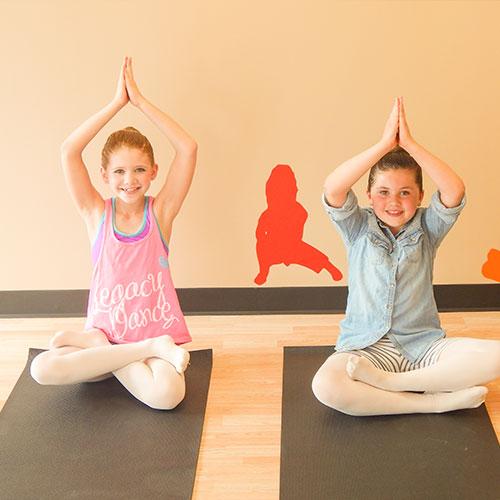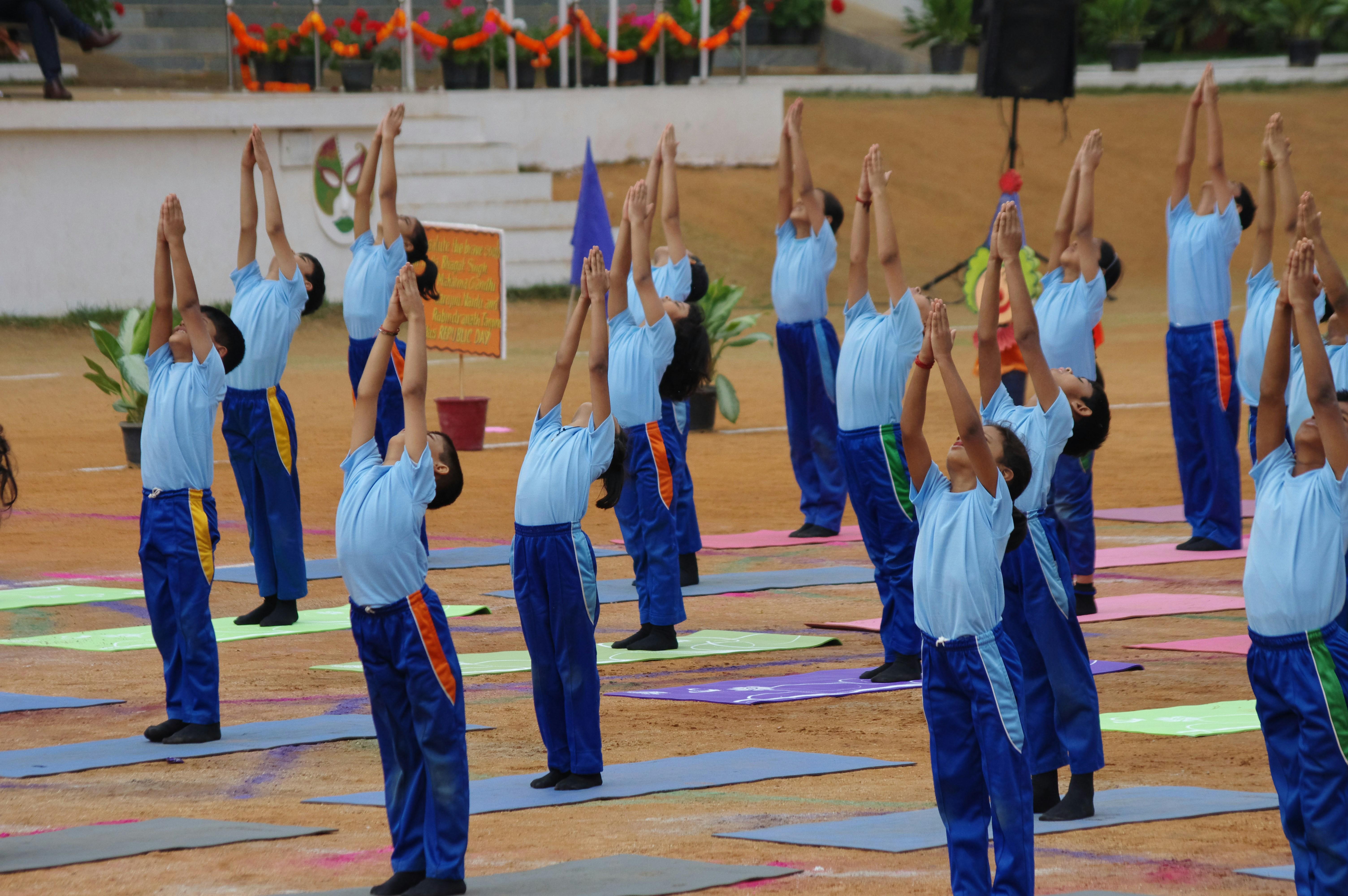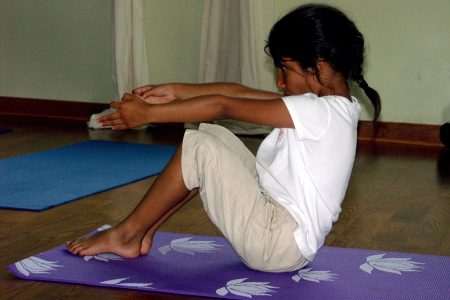In the vibrant tapestry of childhood education, where the threads of academic rigor and social development are intricately woven, a new strand is making its presence felt: yoga. As schools increasingly explore holistic approaches to nurture young minds, the age-old practice of yoga is stepping off the mat and into the classroom. But should it? The idea of children practicing yoga in schools is as intriguing as it is contentious, inviting a myriad of perspectives from educators, parents, and health experts alike. This article delves into the heart of this debate, examining the potential benefits and challenges of integrating yoga into the school curriculum. Is yoga merely a trendy addition, or does it hold the promise of enriching the educational landscape? Join us as we unravel this complex question, exploring the balance between tradition and innovation in shaping the future of education.
Exploring the Benefits of Yoga for Young Minds
Incorporating yoga into school curriculums offers a plethora of advantages that can significantly impact children’s development. By engaging in yoga, young minds can experience enhanced focus and concentration, which can translate to improved academic performance. Additionally, yoga encourages mindfulness, helping children manage stress and anxiety more effectively, fostering a sense of calm and resilience.
- Physical Benefits: Improves flexibility, balance, and coordination.
- Mental Benefits: Enhances concentration and emotional regulation.
- Social Benefits: Promotes cooperation and empathy through group activities.
By integrating these practices into their daily routines, children not only develop healthier bodies but also cultivate a more harmonious mindset, preparing them for the diverse challenges of life both inside and outside the classroom.

Addressing Concerns: Yoga and Cultural Sensitivity in Education
Incorporating yoga into school curricula has sparked a conversation around cultural sensitivity and the need to honor its origins. As yoga is deeply rooted in ancient Indian traditions, it’s crucial to approach its practice in schools with an awareness of cultural respect and integrity. This means recognizing its spiritual heritage while adapting it to a secular, educational setting.
- Educators can benefit from undergoing training that highlights the historical and cultural context of yoga, ensuring they are equipped to teach it respectfully.
- Curriculum designers might consider consulting with cultural experts or representatives from the yoga community to ensure the practice is presented authentically.
- Parents and guardians should be engaged in discussions about how yoga will be integrated, allowing for transparency and addressing any concerns about cultural appropriation.
By fostering a respectful approach, schools can offer yoga as a tool for mental and physical well-being, while honoring its cultural significance.
Integrating Yoga into School Curriculums: Practical Approaches
Integrating yoga into school curriculums can be a transformative approach to fostering a well-rounded education. The inclusion of yoga offers students not only a chance to enhance their physical health but also to develop essential life skills such as mindfulness and emotional regulation. Here are some practical approaches to seamlessly incorporate yoga into the school day:
- Morning Sessions: Start the day with short, guided yoga sessions. This can help students set a positive tone for the day, improving concentration and reducing stress.
- Dedicated Yoga Classes: Allocate specific periods for yoga in the weekly timetable. This allows students to immerse themselves fully in the practice, gaining both physical and mental benefits.
- Yoga Corners: Create designated spaces within classrooms or playgrounds where students can practice yoga during breaks or free time. These spaces can be equipped with mats and calming visuals to encourage participation.
- Teacher Training: Provide training for teachers to incorporate yoga techniques into their teaching methods. This can help in creating a calm and focused classroom environment.
- Integration with Other Subjects: Blend yoga with other subjects like physical education, health, or even art. For instance, students can learn about anatomy through yoga poses or express emotions through yoga-inspired art projects.
By adopting these approaches, schools can create a nurturing environment that promotes the holistic development of students, equipping them with tools to thrive both academically and personally.
Recommendations for Teachers: Creating a Safe and Inclusive Yoga Environment
To foster a welcoming atmosphere in school yoga classes, educators should prioritize inclusivity and safety. It’s essential to create a space where every student feels comfortable and respected. Consider implementing the following strategies:
- Encourage Self-Expression: Allow students to explore poses at their own pace and adapt movements to suit their unique abilities. Highlight the importance of listening to one’s body and celebrating individual progress.
- Use Inclusive Language: Choose words that resonate with all students, regardless of their background or experience. Avoid jargon and be mindful of diverse cultural references.
- Promote a Non-Competitive Environment: Emphasize personal growth over comparison. Remind students that yoga is a personal journey, where the focus is on inner well-being rather than external achievements.
- Ensure Safety: Provide clear instructions and modifications for poses to accommodate different skill levels. Regularly check in with students to ensure they feel secure and supported.
By incorporating these practices, teachers can cultivate a nurturing yoga environment that supports the well-being and development of every child, making the practice both enjoyable and beneficial.
Final Thoughts
As the school bell rings and the chatter of children fills the hallways, the question of whether yoga should find a place within the classroom remains an open dialogue. In this exploration of mindfulness, movement, and education, we’ve navigated the potential benefits and the concerns, the champions and the skeptics. Like a tree pose, the discussion is balanced, rooted in the quest for holistic development, yet swaying with diverse perspectives.
Ultimately, the decision rests with educators, parents, and policymakers, each weighing the scales of tradition and innovation. As we close this chapter, perhaps the answer lies not in a definitive yes or no, but in a willingness to adapt, to experiment, and to understand the unique needs of every child. the goal is a shared one: to cultivate environments where young minds and bodies can flourish, whether on a yoga mat or beyond.

